Your wearable tech can supercharge mental focus through five key features: real-time HRV monitoring that tracks stress and recovery levels, haptic breathing guides that provide vibrotactile feedback for ideal breathing patterns, data-driven mindfulness reminders triggered by performance dips, thorough sleep quality assessment using validated questionnaires and actigraphy, and customizable focus zone notifications during high-intensity training sessions. These evidence-based tools help you maintain peak mental clarity, prevent overtraining, and enhance recovery. Discover how each feature transforms your athletic performance below.
Real-Time Heart Rate Variability Monitoring for Stress Detection
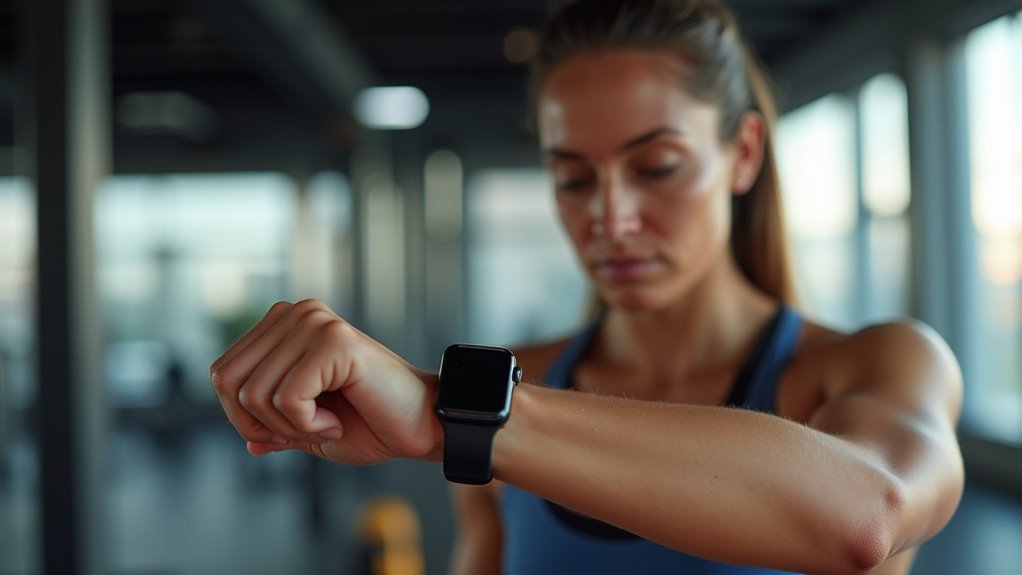
When peak performance matters most, real-time heart rate variability (HRV) monitoring gives you essential insights into your body’s stress levels and recovery status. HRV measures the variation in time between heartbeats, serving as a biomarker for physiological stress and recovery. Your autonomic nervous system regulates this variation, making it an accurate gauge of your body’s current state.
Using wearable sensors or ear clips, you’ll get immediate feedback about your training readiness. Time-domain metrics like RMSSD detect parasympathetic activity, while decreased HRV signals overtraining. Short 1-5 minute measurements provide consistent, reliable data without disrupting your routine.
This technology helps you customize training plans, prevent overtraining, and optimize recovery strategies based on your body’s actual stress levels rather than guesswork. For the most accurate readings, measure HRV when you’re rested and relaxed to establish reliable baseline data for comparison.
Guided Breathing Exercises With Haptic Feedback Alerts
As competition intensifies and your focus becomes essential, guided breathing exercises with haptic feedback alerts deliver precise respiratory control without mental distraction.
Devices like aSpire clip easily to your belt, using pneumatic actuators to provide subtle tactile cues that guide your inhale-exhale timing. You’ll experience reduced breathing rates without additional mental stress, keeping your energy and performance high.
The Wearable Haptic Breathing Assistant teaches foundational abdominal breathing techniques through vibrotactile feedback on your upper body.
When integrated with platforms like Prana, you access 80+ scientifically validated breathing exercises with real-time sensor tracking. Custom alert patterns adapt to your training needs, supporting disciplined breathing whether you’re competing or recovering. Advanced sensors provide precise tracking of respiratory patterns and posture for optimal performance feedback.
These non-intrusive haptic cues enhance concentration and endurance while maintaining comfort during dynamic movement.
Mindfulness Reminders Based on Performance Data Analytics
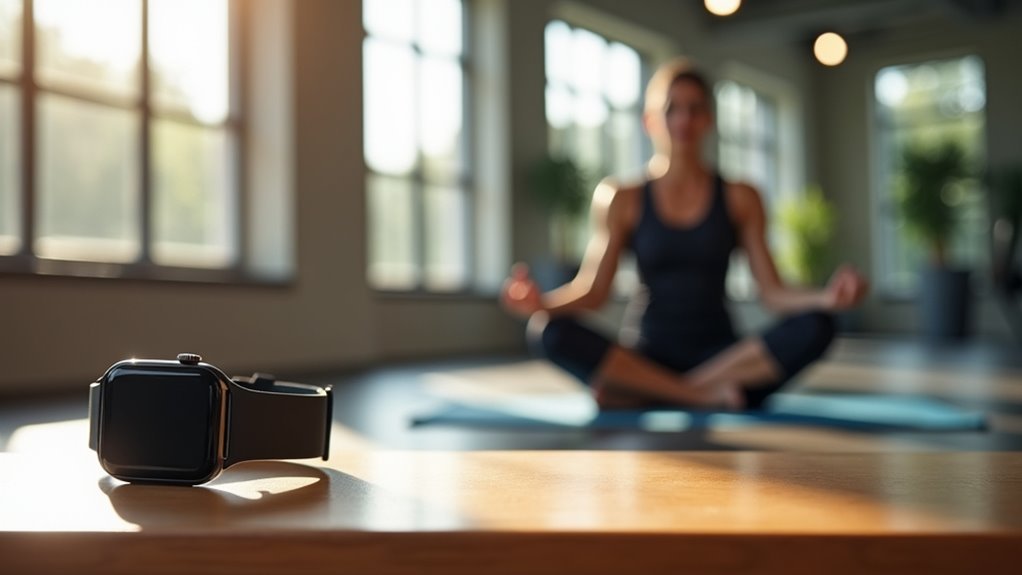
Performance data analytics transform mindfulness from a passive practice into an intelligent, responsive system that triggers precisely when you need it most.
Real-time monitoring of your physiological metrics and performance patterns identifies stress indicators, distraction signals, or performance dips that automatically prompt mindfulness interventions. Adaptive algorithms customize these cues based on your individual baseline and current state, ensuring personalized timing and technique selection.
This data-driven approach tracks specific mindfulness facets like non-reactivity, observing, and acting with awareness to determine which practices most effectively boost your quality of life and performance. Studies with novice athletes demonstrate that just 15 minutes daily of brief mindfulness meditation can significantly enhance shooting performance and attention control.
You’ll receive targeted reminders during training and competition when analytics detect ideal intervention moments, helping you maintain sustained attentional focus even when facing performance pressure or disruptive thoughts.
Sleep Quality Assessment for Mental Recovery Optimization
While mindfulness reminders optimize your mental state during waking hours, your brain’s recovery during sleep forms the foundation for sustained focus and peak performance. You can leverage digital tools to assess and optimize your sleep quality for maximum mental recovery.
| Assessment Method | Purpose | Key Benefits |
|---|---|---|
| Athletic Sleep Screening Questionnaire (ASSQ) | Screen sleep-related issues | Clinically validated for athletes |
| Actigraphy Devices | Monitor sleep patterns objectively | Extended period tracking |
| Athlete Sleep Behavior Questionnaire (ASBQ) | Evaluate sleep hygiene habits | Scores 18-90 (good ≤36) |
These tools help you identify sleep deficiencies affecting your reaction time, mental clarity, and emotional regulation. Poor sleep quality increases injury risk and slows recovery, directly impacting your competitive edge and focus capabilities. Research shows that elite athletes typically achieve only 6.7 hours of sleep despite needing approximately 8.3 hours for optimal recovery.
Focus Zone Notifications During High-Intensity Training Sessions

When your heart rate spikes during high-intensity intervals, staying within your ideal training zones becomes essential for maximizing focus and performance gains. Focus zone notifications provide real-time feedback through your smartwatch, alerting you when you’re pushing too hard or not hard enough.
You can customize these notifications based on specific intensity zones, ensuring peak performance during HIIT sessions while preventing overexertion. The system uses heart rate monitoring and GPS tracking to deliver immediate alerts, helping you maintain concentration during demanding workouts.
Machine learning algorithms analyze your data to provide personalized feedback, while app integration streamlines the experience. This technology reduces overtraining risk, enhances aerobic capacity, and supports better recovery by keeping you within peak intensity ranges throughout your session. These focused mini-challenges with alternating intensity levels help optimize your workout within the typical 20 to 30 minute timeframe.
Frequently Asked Questions
How Do Focus-Boosting Features Integrate With Existing Wearable Device Ecosystems?
You’ll sync focus-boosting features through APIs with platforms like Apple Health and Garmin Connect. They’ll use Bluetooth Low Energy for real-time data flow, integrating EEG and biometric sensors with your existing fitness trackers seamlessly.
What Is the Battery Life Impact of Continuous Focus Monitoring Features?
You’ll experience considerably reduced battery life with continuous focus monitoring, typically dropping from 5-7 days to just 1-2 days due to high-frequency sensors, real-time data transmission, and intensive background analytics processing.
Can These Technologies Help Athletes With ADHD or Attention Disorders?
You can benefit from smartwatches and apps that provide reminders, structure daily routines, and track performance. However, there’s limited research on these technologies specifically helping athletes with ADHD manage attention challenges.
How Accurate Are AI Predictions for Optimal Focus Periods During Training?
AI predictions for your ideal focus periods reach up to 74% accuracy when you’re using high-quality wearable data. You’ll see best results with personalized models that track your sleep, heart rate variability, and training loads continuously.
What Data Privacy Safeguards Exist for Mental Performance Tracking Information?
You’ll find encryption protects your data during transfer and storage, while strict access controls limit who sees your information. GDPR and HIPAA require informed consent, and you maintain ownership rights over your mental performance data.

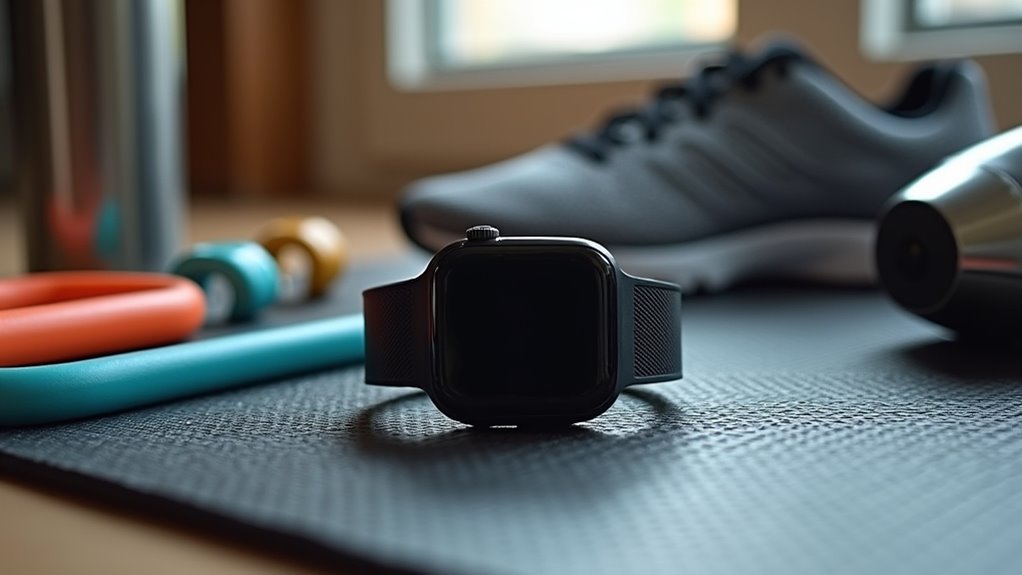
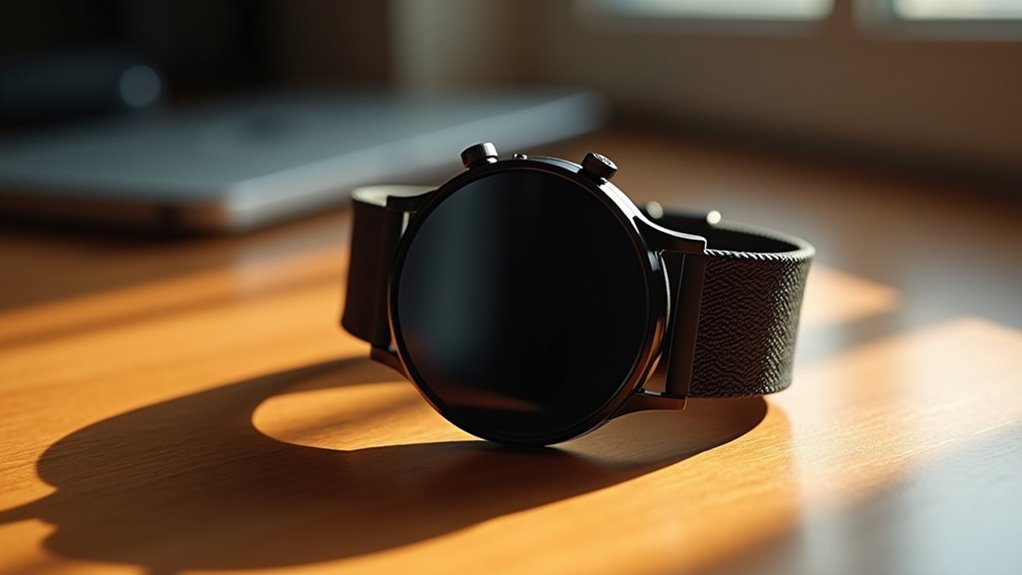
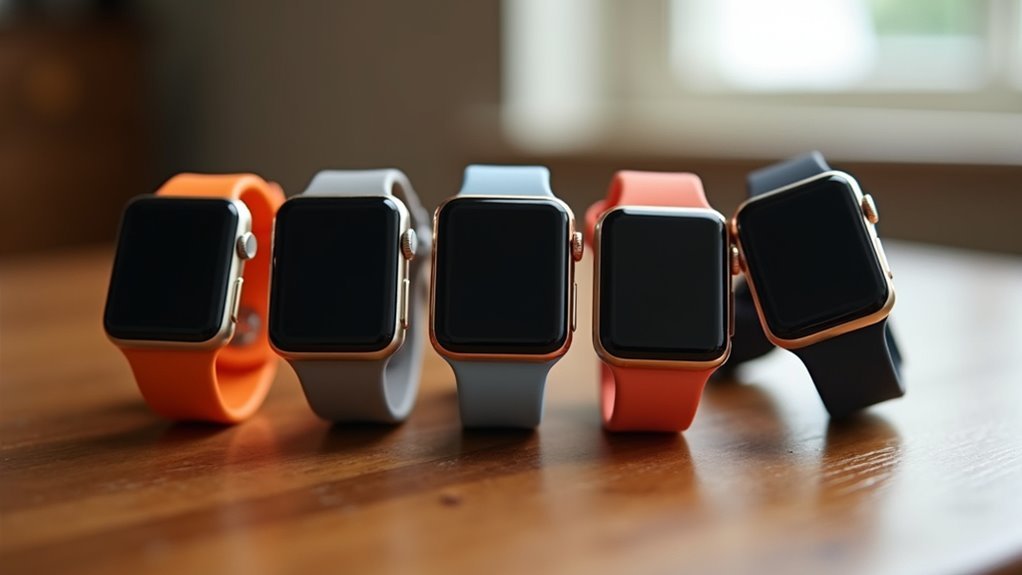
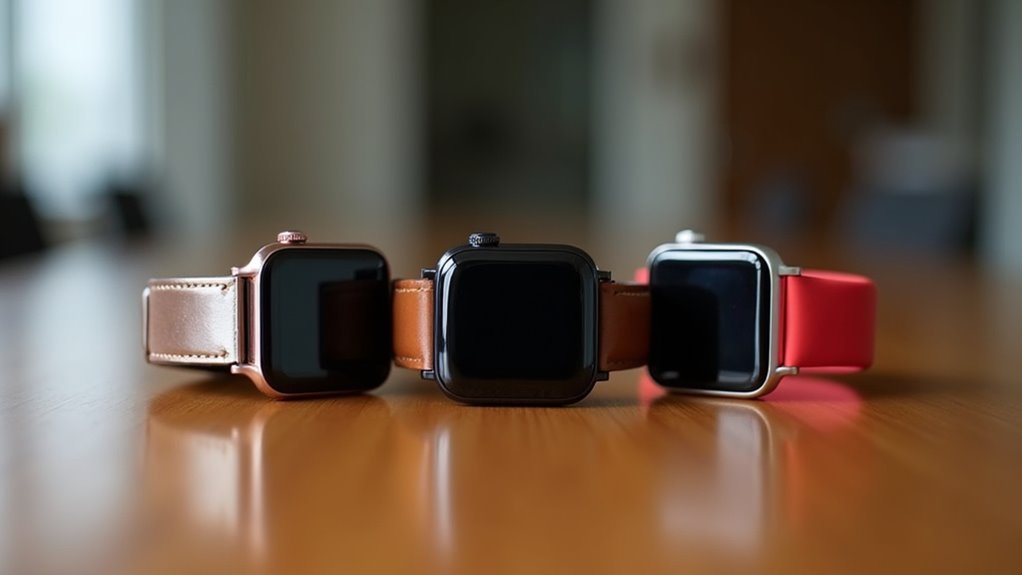
Leave a Reply